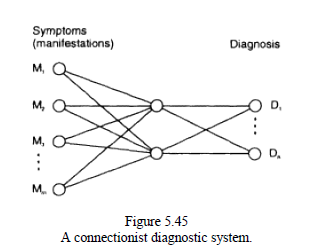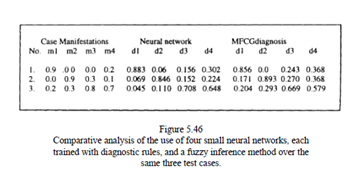SKEDSOFT
Introduction: -Diagnostic systems can be realized in neural networks in which the symptoms are represented by input nodes and the set of diseases by output nodes.
The input nodes take input data, which, depending on the type of the symptoms, can be:
- Real values (possibly normalized)
- True/false values
- Certainty degrees of the presence of symptoms
- Fuzzy values, like "pulse rate high"
On the output nodes, the network can produce, depending on the context of the disease, different values to indicate a diagnosis:
- Real values for output variables
- Probability of a disease occurring
- Certainty or fuzzy membership degrees for a disease that has occurred.
A connectionist diagnostic system can evaluate for a given input vector of values for the symptoms the degree of certainty of not only one but a number of diseases that may occur simultaneously. This makes a dramatic difference when comparing the connectionist with Bayesian approaches to approximate reasoning.
The usual way to develop connectionist diagnostic systems is to train a network with a set of past data recorded through experience. Neural networks can also be trained with a set of rules.

A set of rulesis realized here as a connectionist system. The symptoms takepart in the rules with their typical values which represent degrees of occurrence of the symptom, rather than with fuzzy values, for example, "weak," "more or less strong," "very strong,'' etc:
Rule 1: IF M1 = 1 and M2 = 0.2 and M3 =0 and M4 = 0,
THEN D1 (CF = 0.99)
Rule 2: IF M1 = 0 and M2 = 1 and M3 = 0.1 and M4 = 0,
THEN D2 (CF = 0.97)
Rule 3: IF M1 = 0.3 and M2 = 0 and M3 = 1 and M4 = 0,
THEN D3 (CF = 0.98)
Rule 4: IF M1 = 0.2 and M2 = 0.2 and M3 = 0 and M4 = 0.9,
THEN D4 (CF = 0.96)
The backpropagation algorithm was applied to train four networks, each having four inputs, two hidden nodes, and one output, each trained with four training examples, the corresponding rules in a numerical form encoded differently for the different diagnostic units. The certainty degree of the four possible diagnoses for three new input vectors when using neural networks and when u sing the MFCG method.